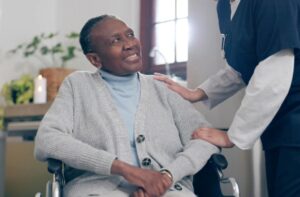Ohio hospice services offer comfort, care, and steady support to people and families during a time that can feel full of questions. When someone is facing the final stage of life, there may be needs related to both health and feelings. Hospice brings a team of trained professionals who help with symptom relief, gentle pain management, and even emotional and spiritual needs. Support is not just for the patient but for the whole family. Services range from practical hospice pain management to ongoing grief counseling. Each piece works together to make this time a little easier for everyone involved. In the next sections, we’ll look at what hospice care programs can offer, how teams work together, and why planning and teamwork are even more important as Ohio heads into fall and winter.
Choosing Hospice Care in Ohio
It is not always easy to know when the time is right to think about hospice care. Sometimes, families notice changes like treatments not helping as much, more trouble with daily routines, or a loved one who seems tired or less like themselves. These signals may be both physical and emotional.
Talking about hospice can feel heavy, but opening up these conversations early with care providers gives families more time for calmer choices. When everyone starts talking sooner, there is space to share what matters most to the patient and family. Early planning helps caregivers step back for a breath and organize care well in advance.
The cold months in Ohio add their own layer to care plans. Snow days, holiday traffic, and less daylight can all affect the way support is arranged. That is why starting these talks before winter sets in can make things less rushed. Families and teams have more time to think about needs and schedules.
Hospice Pain Management: Focusing on Comfort
Comfort is the big goal. Pain at the end of life can show up in lots of ways. Sometimes it is headaches or sore joints, and sometimes it shows up as restlessness or nervous feelings. It can change quickly, especially as health changes from day to day.
Hospice care teams listen closely to patients and family members to find out what kind of pain is present and how it is getting in the way of comfort. After these talks, a plan is built. The plan could use medications, regular nurse check-ins, or comfort measures like gentle repositioning or warm cloths.
The hospice plan is flexible. If one idea stops working, or if side effects create new problems, the team can change the care plan to better fit the patient’s needs. The goal is never just to cover up pain. It is to give the patient as many good, peaceful moments as possible when every day matters.
VNA of Ohio provides skilled hospice nurses who visit at home to manage symptoms and offer hands-on comfort, even overnight or on weekends, keeping care steady for patients and families through all seasons.
Emotional and Spiritual Support for Patients and Families
Emotional support is just as important as medical care. Hospice brings in social workers, chaplains, and even volunteers. Some patients want to talk about memories or feelings, while others want quiet companionship. Some have worries or questions, while others just want to share a laugh.
Hospice support workers are ready to meet people where they are—no pressure, no set rules. Sometimes the best help is just being present, listening, or sharing a story or song. There is a place for silence and a place for humor.
Families, too, often have worries and sadness that need a gentle hand. Hospice teams support everyone, making sure no one feels alone on difficult days. The team can include volunteers who provide companionship, pet visits, or music therapy, depending on the person’s needs and wishes.
Bereavement Support in Ohio Communities
Support from hospice does not end with the loss of a loved one. Grief comes in waves and shows up differently for every person. Bereavement support Ohio families can trust plays a key part in healing. After someone passes, hospice teams offer help for months to come.
Support could be a regular phone call, a letter in the mail, or a grief group with others who understand the journey. Some families choose to meet one-on-one, while others like the sense of connection in group meetings. These check-ins are regular but flexible, adjusting to how the family is feeling.
Other services, like sending memory journals or simple reminders to rest and eat, can be part of the support. Families are not expected to rush through loss. Hospice care creates a gentle space for healing, even when life feels upside down.
Tied Together with Care: How Services Work as One
No piece of hospice care stands alone. Each part—medical, emotional, spiritual—fits together to support both the patient and everyone close to them. A care plan can start with nursing visits, but may also include a volunteer who brings a pet for comfort, or a social worker who helps solve practical worries.
Regular team meetings help make sure nothing is missed. Everyone—nurses, aides, chaplains, social workers, and volunteers—works together, sharing updates and planning ahead. This teamwork brings calm to what could otherwise feel like chaos.
Here are some ways hospice teams keep care steady for families:
– Scheduled check-ins between team members to review care plans
– Sharing care updates with families so everyone knows what to expect
– Making quick changes to support if needs or wishes shift
Good communication is the heart of hospice care. It helps create trust, reduce stress, and make hard days a little lighter.
Care That Carries Through the Seasons
Ohio’s fall and winter bring their own set of challenges for families getting hospice care. Cold and snow can make travel harder, and the holidays may bring both joy and sadness. That is why hospice care teams plan ahead to keep support on track, even when schedules get busy or the weather turns rough.
This planning might mean delivering extra supplies before a snowstorm, checking in ahead of the holidays, or making care visits work around big family gatherings. Some patients find comfort in extra sleep during darker winter days, while others want more company.
Families planning ahead in autumn can help avoid stress as calendars fill up. It gives everyone space to sort out who will visit, who will help, and when it is time to rest. The focus stays on warmth and togetherness, even when there are extra layers for Ohio’s coldest months.
Looking Ahead with Support and Confidence
Hospice care in Ohio means more than medical support for patients. It is a network of care that brings comfort, steadiness, and gentle help when families need it most. Hospice pain management, emotional help, companionship, and bereavement support all work together so that no one faces this time alone.
When every part of care connects, there is more room for quiet moments and memories. Families can focus on their loved one rather than worrying what comes next. Having a dedicated team standing by can make every day feel a little more hopeful, even during Ohio’s coldest seasons
At VNA of Ohio, we know how hard it can be when care needs change. Whether you’re supporting a loved one through symptom management, finding peace in small daily moments, or needing guidance through grief, having the right people beside you truly matters. Our team is here to walk with you and help you feel more confident about each step. To understand what care and comfort can look like with hospice in Cleveland, please contact us.







